- Home
- Tom Clancy
SSN Page 2
SSN Read online
Page 2
Russian president Gennadi Zyuganov, himself a conservative Communist like Chinese leader Li Peng, refused to comment on the possibility of advanced weapons sales to China, yet did say that Russia enjoys a balanced trade agreement with China on the sales of certain weapons, including Kilo class submarines. Russia, cash-poor since the breakup of the Soviet Union, clearly depends on submarine sales to China to help fund social and economic projects, as well as the upgrading of its own navy.
* * *
Chinese submarine sunk, war expected soon
August 2, 1997
Web posted at: 1:00 P.M. EST (1800 GMT)
From Beijing bureau chief Julie Meyer
BEIJING (TCN) — Fighting began today in the South China Sea between the UN-backed United States Navy and the Chinese navy in and around the Spratly Islands. The first skirmish occurred when the aircraft carrier USS Nimitz was attacked by a Chinese submarine, suspected to be an aging Han class attack submarine. When the submarine came within striking distance of the Nimitz, it was sunk by an American Los Angeles class submarine that was escorting the carrier. All hands are reported lost.
In response to today’s conflict, the Chinese navy appears to have adopted a more aggressive posture in the area and more conflict lies ahead. In fact, China is officially expected to declare war against the United States of America within the week.
“This isn’t going to be over as quickly as the Falkland Islands conflict fifteen years ago,” says international relations professor and China policy specialist Dr. Adrian Mann. “China is much stronger than Argentina, and they hold considerable tactical advantages over the U.S. Navy forces in the area.” Other experts are telling a similar story. However, in the face of lengthy combat, the use of nuclear weapons is a great concern to many, including Dr. Mann. “I doubt that the Chinese will consider the possibility, and I think it likely that all sides will agree to keep the fighting localized to the South China Sea.” Indeed, the President and the secretary-general of the UN are said to be drafting an offer to Chinese leader Li Peng proposing just that.
In the meantime, U.S. and UN sanctions against China continue, with the General Assembly of the UN signing a broad package of economic restrictions of trade with China. The effects of these sanctions should be felt immediately, as they ban the import of all goods into China, with the exception of food and medical supplies. In addition to economic sanctions, the President said today that he is fully committed to expelling China from the Spratly Islands and aiding in the restoration of Jiang Zemin to power.
1. First Blood
The USS Cheyenne, a Los Angeles class nuclear attack submarine, cast off the tugboat’s lines at precisely 0100 on 12 August 1997, and moved under its own power into the dark waters of San Diego Bay. Astern of Cheyenne, the lone tugboat hauled in the lines and headed back to its berth at the San Diego Naval Base, headquarters of the Third Fleet.
The atmosphere aboard Cheyenne was taut with pre-mission tension. Her crew had performed admirably during her abbreviated shakedown cruise, but now she was on high alert and headed into almost certain conflict.
A few years earlier, as a result of the post-Cold War defense drawdown, the Third Fleet had relocated from Pearl Harbor to San Diego Naval Base. With the Chinese moving on the Spratly Islands, Cheyenne had been ordered to ready for deployment. She was now on her way from her berth at the Ballast Point Naval Submarine Base to the Pearl Harbor Naval Submarine Base to complete her outfitting. From there she would take up station in the South China Sea.
Cheyenne was the newest attack submarine in the U.S. Navy. She was also the last of an era. Given the hull number SSN-773, Cheyenne was the last of sixty-two Los Angeles class nuclear attack submarines to be funded by Congress. Built by Newport News Shipbuilding in the Virginia town of the same name, Cheyenne was 360 feet long and displaced 6,900 tons. She was equipped with the latest advanced weapons and sensor systems.
Cheyenne’s pressurized-water, S6G General Electric reactor had been critical for some time and the OOD (officer of the deck) had earlier passed the word, “Rig Ship for Dive.” When she was farther away from land, reaching the water west of Point Loma, where it was deep enough for the submarine to dive, sailors on board Cheyenne completed readying the submarine for submergence. From the sonar room to the torpedo compartments, sailors hurriedly confirmed that all was well in their compartments. The final message came back to the OOD, “Cheyenne is now rigged for dive.”
Captain Bartholomew “Mack” Mackey was pleased with both his ship and his crew. A big man, Mack had been engineering officer of an earlier 688, and executive officer and plank owner (new construction crew) of an improved 688-like Cheyenne—the 6881 USS Greenville (SSN 772), Cheyenne’s predecessor at Newport News. Mack was a rising star, two years deep selected for O-5 (Commander) and two years deep selected for O-6 (captain). Mack was a real captain, not just in terms of the Navy tradition of referring to a commanding officer as “captain,” but in pay grade as well.
Mack knew his crew had heard the rumors of a possible war with China. The recent Chinese actions concerning the U.S.-flagged Benthic Adventure, a United Fuels Corporation prospecting ship sailing in international waters off the Spratly Islands, had been considered by many in the United States to be an act of war. Even more blatant was the Chinese invasion of the long-contested Spratlys.
But Mack knew the rumors were true. As of 2 August, a virtual state of war had existed between the United States and China. On that date a Chinese Han class nuclear attack submarine came within striking distance of the U.S. aircraft carrier Nimitz with what appeared to be hostile intentions. In defense of Nimitz, an American escort submarine sank the Han, killing all aboard the Chinese vessel.
The story had saturated the news. There had been no further hostile action taken by the Chinese military, which led many experts to speculate whether they could have learned their lesson. That was, however, one nice thing about being on a submarine. One didn’t have to worry much about news. Attack submarines often stayed out on missions for as long as six months, surfacing for food and supplies when they were needed or visiting the various ports to which they had been assigned.
News was not the job of Cheyenne—theirs was a much more important mission: proceed to Pearl Harbor and ready herself for potentially imminent hostilities with mainland China.
The submarine submerged when she was ready, slowly at first and then more and more quickly. When she was underwater, the OOD began the transit by turning the submarine in a southwesterly direction — the most direct route for Pearl Harbor.
With the ship underway submerged, Mack was able to concentrate on the main obstacle to his mission, the possibility that Chinese nuclear attack submarines might be lurking along his path. His orders were clear: If Cheyenne were to come into contact with a Chinese vessel, she was to proceed with the utmost caution and attack only in self-defense. In other words, Mack knew, Cheyenne was free to fire only if she was fired upon first. The United States was not at war yet—“yet” being the operative word. When Cheyenne arrived at Pearl she was to load up on weapons and food needed for the possibility of a long cruise — one that could turn into a combat operation.
There was not much room on a submarine for storing food, so crates containing the canned goods that the crew needed to eat were loaded into the passageways, one on top of the other, making a temporary floor upon which sailors would walk until the food was ready to be eaten. As the crew consumed the food, the floor would grow shorter. Until then, the passageways would be a very dangerous place for taller members of the submarine crew. They would have to walk with their heads hunched down to avoid hitting overhead pipes and wireways.
As Captain Mackey walked toward the tiny wardroom he’d be using as the briefing room, he grinned at the thought that everything from canned tomato sauce to string beans was stored beneath his feet.
Cheyenne was two hours from San Diego Bay. Travelling at twenty-six knots, this put her fifty-two nautical miles from hom
e.
Entering the wardroom, Mack motioned to his officers to sit. “As you are all aware,” he said, “we are currently in a highly tense environment due to the recent hostile actions taken by the Chinese military.” He was careful to point out that these aggressive actions were by the military — not, as the media often claimed, by the people or the politicians. “I would just like to inform all of you that we received a message that a Canadian P-3 Orion operating on a training mission out of San Diego thinks that they may have picked up a submarine 237 miles southwest of our current position. They even got positive MAD (magnetic anomaly detection) contact, but they lost contact after tracking the submarine for about twenty minutes. The P-3 crew is pretty confident that what they found was an SSN. Naval Intelligence thinks it may even be one of the Chinese Han class of nuclear attack submarines, but up to this point they haven’t been able to confirm anything. We have been instructed to keep our ears open for this possible contact while at the same time proceeding as fast as we can to Pearl so that we can arrive safely on station in the South China Sea. We are to avoid taking any actions against the submarine — unless, of course, he tries to kill us.”
The officers took this news in stride, and while the meeting was not as rousing as the captain had hoped, it had gotten his point across. Word would soon be buzzing throughout Cheyenne that they would be on the lookout for a nuclear attack submarine, possibly Chinese, lingering far too close to United States waters for comfort — even if being in international waters was within the legal realm of international law.
For her transit to Pearl Harbor, Cheyenne was given a small loadout of torpedoes. The full capability of her torpedo room was twenty-six weapons, including four in the torpedo tubes, consisting of a combination of Mk 48 torpedoes, Tomahawk cruise missiles (land-attack and antiship varieties), Harpoon antiship missiles, and sometimes, though rarely, Mk 67 submarine-launched mobile mines. However, for this transit, Cheyenne was given only 12 Mk 48 ADCAP torpedoes. With a top speed of over fifty knots while running deep, and a range in excess of 30,000 yards, the Mk 48 ADCAP was arguably the best heavy torpedo in existence. Its only real competition came from the British Spearfish, which was carried by the submarines of the Royal Navy.
The Mk 48 ADCAP, which stood for Advanced Capability, was a heavy wire-guided torpedo weighing over 3,000 pounds. Nearly 20 percent of its weight, or 650 pounds, consisted of PBXN-103 high explosive. One of the advantages of the Mk 48 was that it could be used against both submarine and surface targets, which made it much easier on logistics. It also pleased many submarine captains who still preferred the thrill of launching a torpedo over the newer, vertical launch Tomahawks or encapsulated Harpoon missiles.
Each Mk 48 was wire guided so that targeting data during the initial stages of the torpedo launch could be transmitted back and forth from the Mk 48 to the BSY-1 fire-control system on board the attack submarine. During the terminal stages of the attack, the Mk 48 would use its powerful active seeker to detect, home in on, and then destroy its target. As long as the wire was intact, information from the torpedo was constantly relayed to Cheyenne until detonation.
After the meeting, Mack returned to the control room. Knowing that there might be a nuclear attack submarine in the area, he ordered that instead of running at twenty-six knots for much of the way to Pearl Harbor, as he had originally planned, Cheyenne would now slow more frequently in order to listen to her surroundings. This “sprint and drift” technique was one of the best methods of arriving at a destination quickly while also allowing the submarine’s passive sonar to search for any possible sonar contacts.
Cheyenne was now at an ordered depth of four hundred feet. At this depth, she was in her own element, that of the depths of the ocean. If necessary, she could still be reached by the relatively new, albeit slow, ELF, or extremely low frequency, band of communications. If there were a dire emergency, or a change in her orders, Cheyenne would be instructed by a short, coded ELF message to come to communications depth in order to receive important message traffic.
Running at twenty-six knots was not always quiet. The screw, known to those outside the Navy as a propeller, was working feverishly to propel the submarine at this speed. If too shallow, this created tiny air bubbles, which made a popping noise when they collapsed. This noise was known as cavitation and could give away a submarine’s presence in the area. At this moment, Mack did not care as much about his stealth capability as he did about two other concerns: locating the submarine that was lurking dangerously near the West Coast, and arriving at the Pearl Harbor Naval Submarine Base with Cheyenne intact.
All aboard Cheyenne were aware that they were making slight cavitation noise and that anyone who was close enough and quiet enough could determine their location. The frequent slowing and so-called clearing of the baffles, the normally “sonar blind” area astern of submarines, evened the score somewhat.
At 1100 on 12 August, just ten hours after leaving San Diego, the OOD ordered Cheyenne to slow to one-third. Exactly eleven minutes later the sonar room came alive as Cheyenne slowed and her course was changed toward the north.
“Tonal contact, center bearing 187 on the end-fire beam,” called one of the young sonar operators. The consoles, which looked like computer screens with green lines running through them, were often the sonar operator’s most important ally.
An instant later the sonar supervisor, who had been paying close attention to the goings-on in this important center of the submarine, called to the captain, “Conn, sonar, we have a possible submarine contact bearing 187. We’re only receiving blade rate information so far.”
Mack entered the sonar room, joining the five other men already there — including the sonar supervisor and the sonar officer. Everyone in the room knew that there was the possibility of encountering a Chinese submarine, but also knew it was highly unlikely. Chinese naval vessels rarely ventured this far away from home waters. This was especially true of the Chinese submarine fleet, which consisted largely of older-model diesel boats with just a few very noisy nuclear-powered attack submarines of the Han class.
If there was a Chinese submarine patrolling off the West Coast of the United States, however, Mack was fairly sure that it would have to be a Han class. Naval intelligence reports had repeatedly explained that only one type of submarine was capable of travelling this far from Chinese home waters and operating — without surfacing — for an extended period of time. That type was a nuclear submarine, and the only Chinese SSN currently in service was the Han class.
Captain Mackey was, as were all experienced submariners, at least slightly familiar with the Han class of submarine. In addition, when word was passed of a possible war with China, the intelligence officer assigned to SubRon 11 from SubGroup 5 had quickly prepared a brief report of what was known of the Han class in the U.S. intelligence community. According to that report, construction of the Han class had stopped after only five submarines due to extremely high internal radiation levels, and all of those were currently in service with the Chinese navy. They carried the pennant numbers 401, 402, 403, 404, and 405 painted on their sail. One of the class had, of course, been destroyed earlier that month by a U.S. SSN. Naval intelligence was still unsure which number it was, but they reported that it was probably number 402, the second of the class. They were assuming this because it had been tracked since leaving Ningbo Naval Base in China’s East Sea Fleet four days prior to the actions involving Nimitz.
The torpedo complement fitted to the Han class was reported to be a mix of the older straight-running types as well as some of the newer Russian homing varieties. According to the reports, numbers 401 and 402 carried only torpedoes, but the last three submarines of the class, numbers 403 to 405, carried the Ying Ji. Also known as the Eagle Strike, this antishipping missile was a sea skimmer and caused great concern in the eyes of naval commanders. The most recent intelligence reports stated that while these missiles could be a significant threat to warships, the submarine needed to surfa
ce in order to launch them. And submarine commanders knew all too well that a surfaced submarine was an easy target.
Unlike the USS Seawolf, Cheyenne did not have a wide aperture array, or WAA, so she would have to triangulate the position of her passive sonar contacts in order to determine their exact bearing, speed, and range. The ship maneuvers to accomplish this would have to be done very quietly, especially if the contact, now designated Master 1, was a direct-path contact. But it was a painfully slow process.
“Captain,” the sonar supervisor said, “it’s possible the submarine was tracking us but lost us when we slowed. With these convergence zones out here in deep water, it could be in excess of 75,000 yards away. My guess is that he thinks we passed him, and based on its blade rate, is running full speed in an attempt to catch up with us and regain contact.”
That was a good guess, Mack thought, but it was still just a guess. He wanted something more than that. Proceeding to the conn, he ordered the OOD to station the section fire-control tracking party so the BSY-1 computers could be used to determine the solution on the target. The OOD would maneuver the submarine in order to change the bearings received by the towed arrays.
Mack also ordered the OOD to house the TB-16 towed array and deploy the TB-23 towed-array. Unlike the 240 feet of TB-16 hydrophones, the TB-23 towed-array sonar measured over 900 feet in length, mounted nearly 100 hydrophones, and was towed at the end of a 2,600-foot cable. Then he returned to the sonar room.
“Captain, blade rate indicates Master 1’s speed is steady at eighteen knots,” reported the sonar supervisor. “We’re getting more tonals now, including one from the conformal array. She’s definitely not American. The tonals compare to those listed in the sonar intelligence manuals as unique to Chinese Han class, number 402.”

 Changing of the Guard
Changing of the Guard Clear and Present Danger
Clear and Present Danger Hounds of Rome
Hounds of Rome Breaking Point
Breaking Point Tom Clancy's Jack Ryan Books 7-12
Tom Clancy's Jack Ryan Books 7-12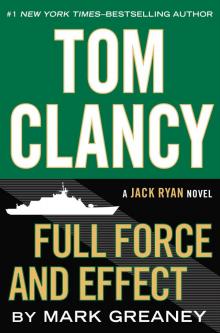 Full Force and Effect
Full Force and Effect The Archimedes Effect
The Archimedes Effect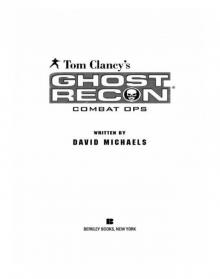 Combat Ops
Combat Ops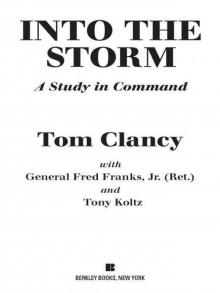 Into the Storm: On the Ground in Iraq
Into the Storm: On the Ground in Iraq Under Fire
Under Fire Point of Impact
Point of Impact Red Rabbit
Red Rabbit Rainbow Six
Rainbow Six The Hunt for Red October
The Hunt for Red October The Teeth of the Tiger
The Teeth of the Tiger Conviction (2009)
Conviction (2009)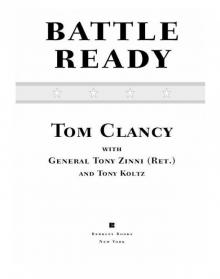 Battle Ready
Battle Ready Patriot Games
Patriot Games The Sum of All Fears
The Sum of All Fears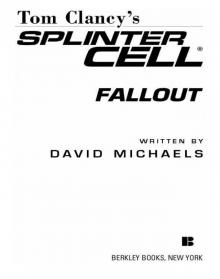 Fallout (2007)
Fallout (2007) Red Storm Rising
Red Storm Rising The Cardinal of the Kremlin
The Cardinal of the Kremlin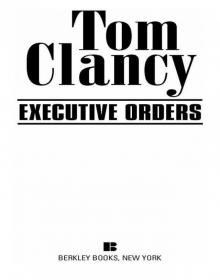 Executive Orders
Executive Orders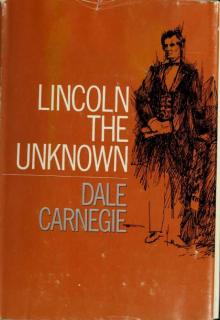 Lincoln, the unknown
Lincoln, the unknown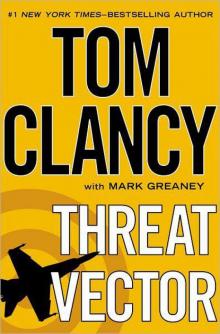 Threat Vector
Threat Vector The Hunted
The Hunted Shadow Warriors: Inside the Special Forces
Shadow Warriors: Inside the Special Forces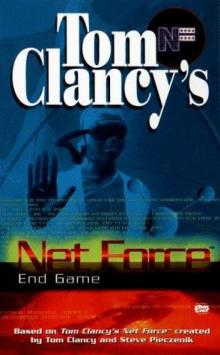 End Game
End Game Special Forces: A Guided Tour of U.S. Army Special Forces
Special Forces: A Guided Tour of U.S. Army Special Forces Locked On
Locked On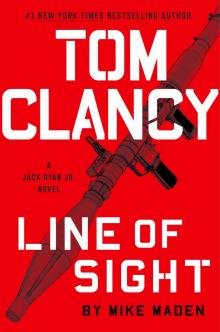 Line of Sight
Line of Sight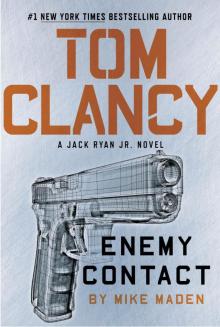 Tom Clancy Enemy Contact - Mike Maden
Tom Clancy Enemy Contact - Mike Maden Fighter Wing: A Guided Tour of an Air Force Combat Wing
Fighter Wing: A Guided Tour of an Air Force Combat Wing Springboard
Springboard Line of Sight - Mike Maden
Line of Sight - Mike Maden EndWar
EndWar Dead or Alive
Dead or Alive Tom Clancy Support and Defend
Tom Clancy Support and Defend Checkmate
Checkmate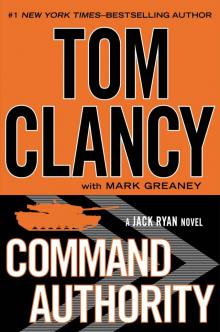 Command Authority
Command Authority Carrier: A Guided Tour of an Aircraft Carrier
Carrier: A Guided Tour of an Aircraft Carrier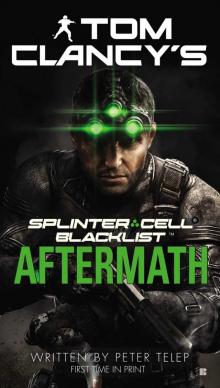 Blacklist Aftermath
Blacklist Aftermath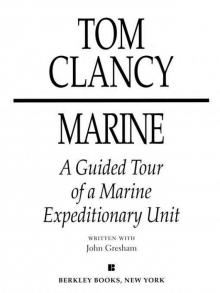 Marine: A Guided Tour of a Marine Expeditionary Unit
Marine: A Guided Tour of a Marine Expeditionary Unit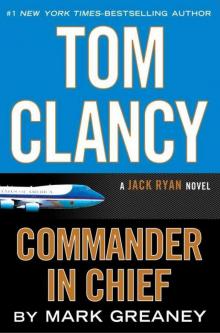 Commander-In-Chief
Commander-In-Chief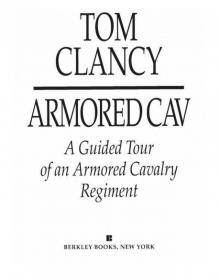 Armored Cav: A Guided Tour of an Armored Cavalry Regiment
Armored Cav: A Guided Tour of an Armored Cavalry Regiment Tom Clancy's Jack Ryan Books 1-6
Tom Clancy's Jack Ryan Books 1-6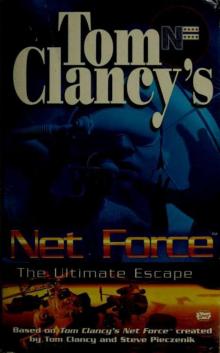 The Ultimate Escape
The Ultimate Escape Airborne: A Guided Tour of an Airborne Task Force
Airborne: A Guided Tour of an Airborne Task Force Debt of Honor
Debt of Honor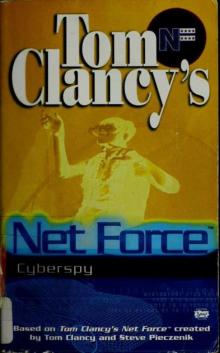 Cyberspy
Cyberspy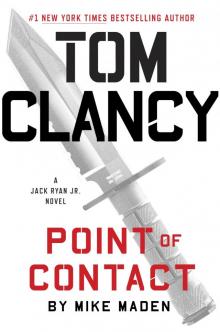 Point of Contact
Point of Contact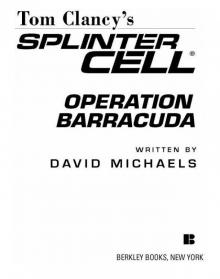 Operation Barracuda (2005)
Operation Barracuda (2005) Choke Point
Choke Point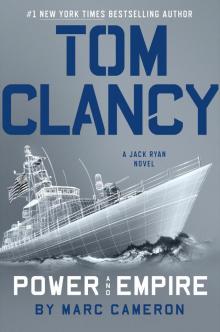 Power and Empire
Power and Empire Every Man a Tiger: The Gulf War Air Campaign
Every Man a Tiger: The Gulf War Air Campaign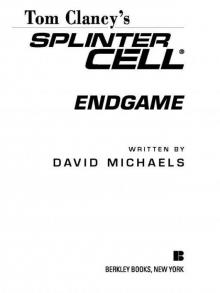 Endgame (1998)
Endgame (1998) EndWar: The Missing
EndWar: The Missing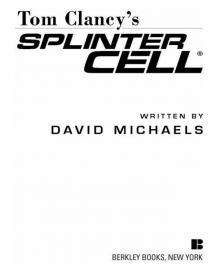 Splinter Cell (2004)
Splinter Cell (2004) The Great Race
The Great Race True Faith and Allegiance
True Faith and Allegiance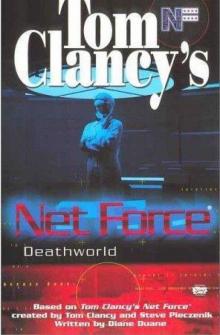 Deathworld
Deathworld Ghost Recon (2008)
Ghost Recon (2008)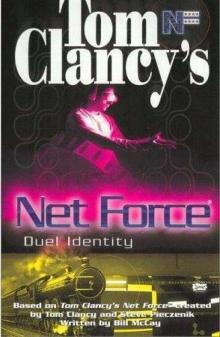 Duel Identity
Duel Identity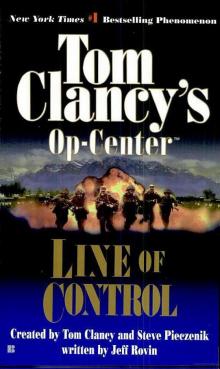 Line of Control o-8
Line of Control o-8 The Hunt for Red October jr-3
The Hunt for Red October jr-3 Hidden Agendas nf-2
Hidden Agendas nf-2 Acts of War oc-4
Acts of War oc-4 Ruthless.Com pp-2
Ruthless.Com pp-2 Night Moves
Night Moves The Hounds of Rome - Mystery of a Fugitive Priest
The Hounds of Rome - Mystery of a Fugitive Priest Into the Storm: On the Ground in Iraq sic-1
Into the Storm: On the Ground in Iraq sic-1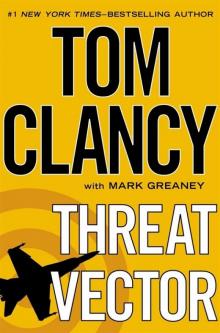 Threat Vector jrj-4
Threat Vector jrj-4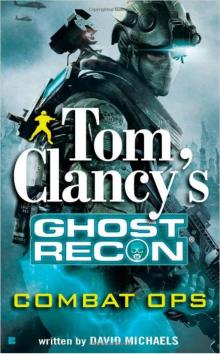 Combat Ops gr-2
Combat Ops gr-2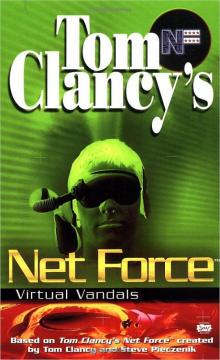 Virtual Vandals nfe-1
Virtual Vandals nfe-1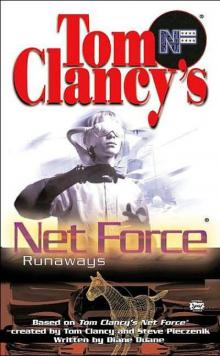 Runaways nfe-16
Runaways nfe-16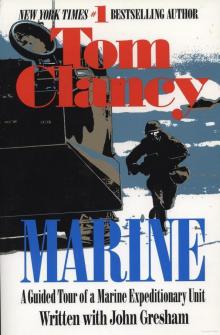 Marine: A Guided Tour of a Marine Expeditionary Unit tcml-4
Marine: A Guided Tour of a Marine Expeditionary Unit tcml-4 Shadow Warriors: Inside the Special Forces sic-3
Shadow Warriors: Inside the Special Forces sic-3 Jack Ryan Books 1-6
Jack Ryan Books 1-6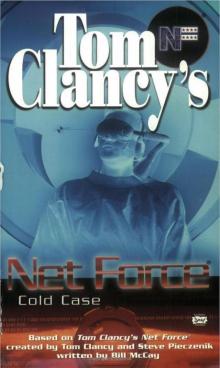 Cold Case nfe-15
Cold Case nfe-15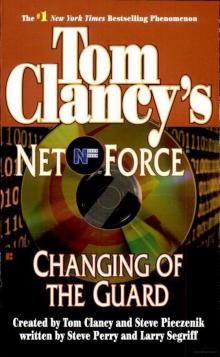 Changing of the Guard nf-8
Changing of the Guard nf-8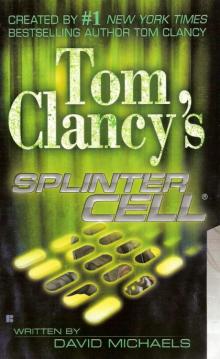 Splinter Cell sc-1
Splinter Cell sc-1 Battle Ready sic-4
Battle Ready sic-4 The Bear and the Dragon jrao-11
The Bear and the Dragon jrao-11 Fighter Wing: A Guided Tour of an Air Force Combat Wing tcml-3
Fighter Wing: A Guided Tour of an Air Force Combat Wing tcml-3 Patriot Games jr-1
Patriot Games jr-1 Jack Ryan Books 7-12
Jack Ryan Books 7-12 Mission of Honor o-9
Mission of Honor o-9 Private Lives nfe-9
Private Lives nfe-9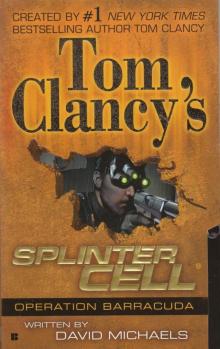 Operation Barracuda sc-2
Operation Barracuda sc-2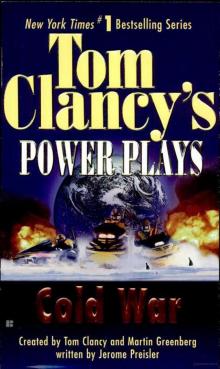 Cold War pp-5
Cold War pp-5 Point of Impact nf-5
Point of Impact nf-5 Red Rabbit jr-9
Red Rabbit jr-9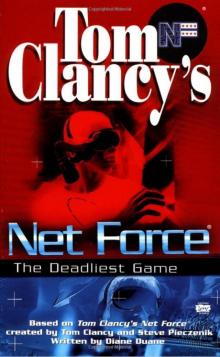 The Deadliest Game nfe-2
The Deadliest Game nfe-2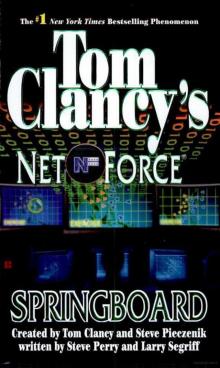 Springboard nf-9
Springboard nf-9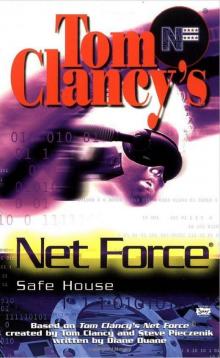 Safe House nfe-10
Safe House nfe-10 EndWar e-1
EndWar e-1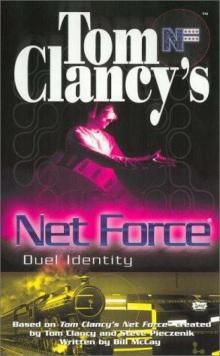 Duel Identity nfe-12
Duel Identity nfe-12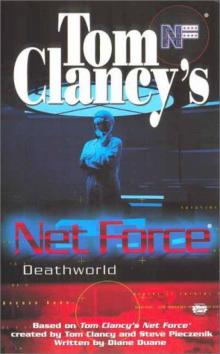 Deathworld nfe-13
Deathworld nfe-13 Politika pp-1
Politika pp-1 Rainbow Six jr-9
Rainbow Six jr-9 Tom Clancy's Power Plays 1 - 4
Tom Clancy's Power Plays 1 - 4 Endgame sc-6
Endgame sc-6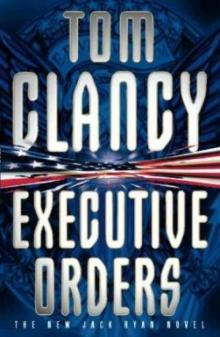 Executive Orders jr-7
Executive Orders jr-7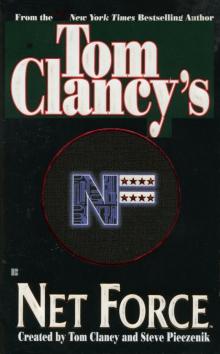 Net Force nf-1
Net Force nf-1 Call to Treason o-11
Call to Treason o-11 Locked On jrj-3
Locked On jrj-3 Against All Enemies
Against All Enemies The Sum of All Fears jr-7
The Sum of All Fears jr-7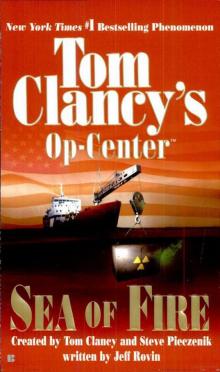 Sea of Fire o-10
Sea of Fire o-10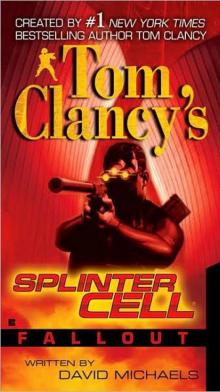 Fallout sc-4
Fallout sc-4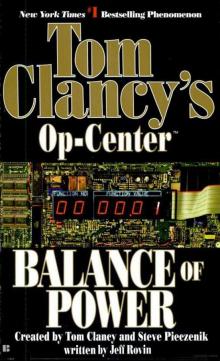 Balance of Power o-5
Balance of Power o-5 Shadow Watch pp-3
Shadow Watch pp-3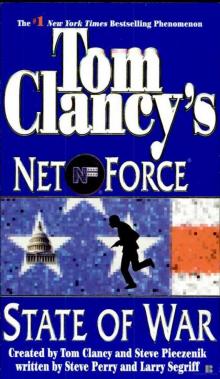 State of War nf-7
State of War nf-7 Wild Card pp-8
Wild Card pp-8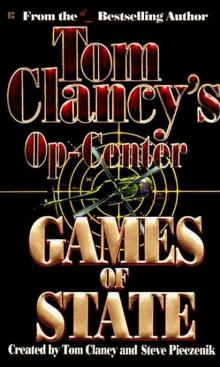 Games of State o-3
Games of State o-3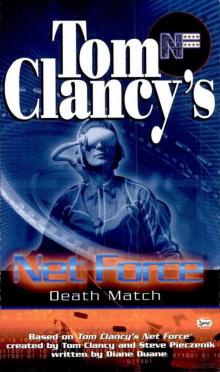 Death Match nfe-18
Death Match nfe-18 Against All Enemies mm-1
Against All Enemies mm-1 Every Man a Tiger: The Gulf War Air Campaign sic-2
Every Man a Tiger: The Gulf War Air Campaign sic-2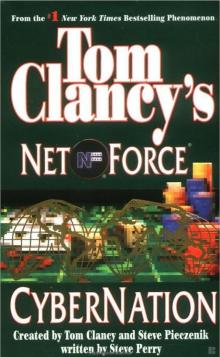 Cybernation nf-6
Cybernation nf-6 Support and Defend
Support and Defend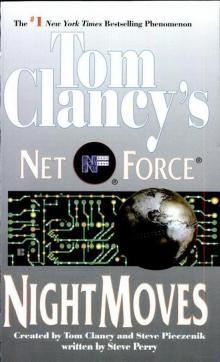 Night Moves nf-3
Night Moves nf-3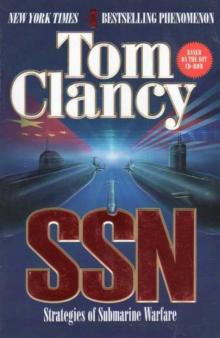 SSN
SSN Cutting Edge pp-6
Cutting Edge pp-6 The Cardinal of the Kremlin jrao-5
The Cardinal of the Kremlin jrao-5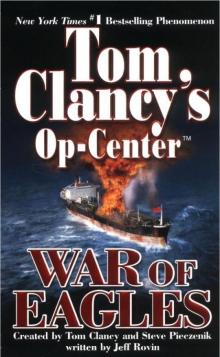 War of Eagles o-12
War of Eagles o-12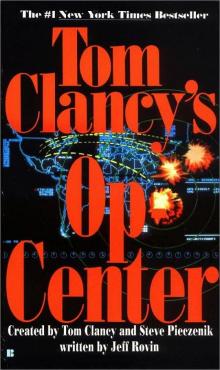 Op-Center o-1
Op-Center o-1 Mirror Image o-2
Mirror Image o-2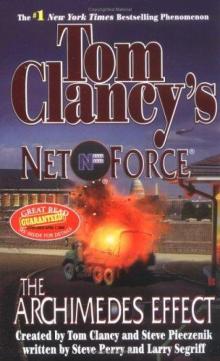 The Archimedes Effect nf-10
The Archimedes Effect nf-10 Teeth of the Tiger jrj-1
Teeth of the Tiger jrj-1 Bio-Strike pp-4
Bio-Strike pp-4 State of Siege o-6
State of Siege o-6 Debt of Honor jr-6
Debt of Honor jr-6 Zero Hour pp-7
Zero Hour pp-7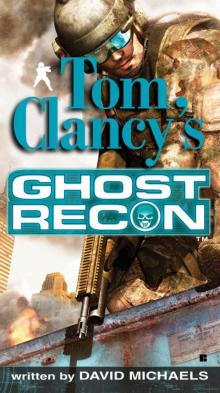 Ghost Recon gr-1
Ghost Recon gr-1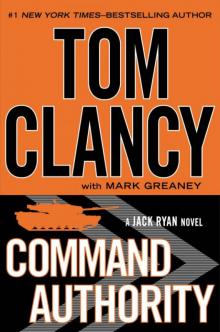 Command Authority jr-10
Command Authority jr-10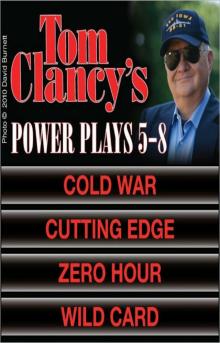 Tom Clancy's Power Plays 5 - 8
Tom Clancy's Power Plays 5 - 8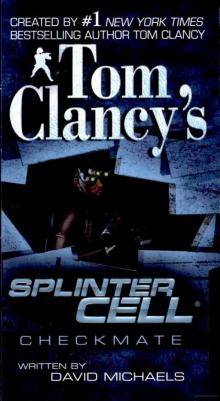 Checkmate sc-3
Checkmate sc-3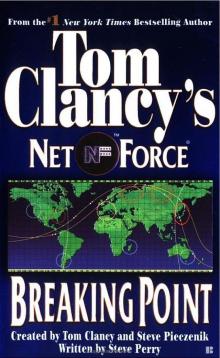 Breaking Point nf-4
Breaking Point nf-4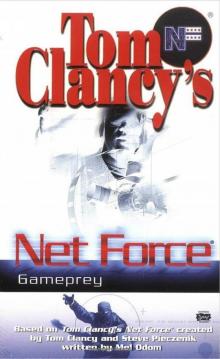 Gameprey nfe-11
Gameprey nfe-11 The Hunted e-2
The Hunted e-2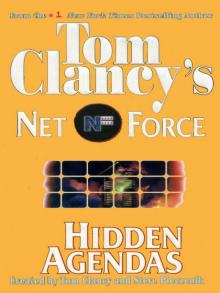 Hidden Agendas
Hidden Agendas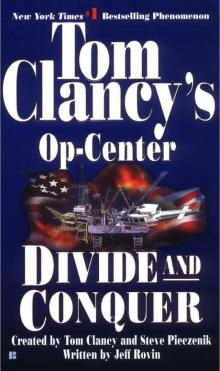 Divide and Conquer o-7
Divide and Conquer o-7